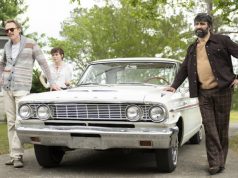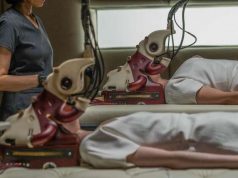Dogtown was a lower-income section of West Los Angeles in the ’60s and ’70s, and the birthplace of modern skateboarding. “Dogtown and Z-Boys” is a fine, interesting documentary about the group of youngsters who were the pioneers of the sport.
Directed by one of those youngsters, Stacy Peralta, and narrated by Sean Penn, “Dogtown and Z-Boys” begins where skateboarding began: with surfing. From the late ’50s until about 1965, skateboarding was the ultimate post-surfing activity for California kids. Then it fell out of fashion, to be revived again a few years later.
Helping the revival were three surfers who opened the Zephyr surfing shop in Dogtown. They became the “parents” of a dozen or so kids — street kids, mostly, from broken homes — who took up surfing and then skateboarding, duplicating the tricky maneuvers their heroes made on water and putting them on wheels.
Soon skateboarding was a full-blown phenomenon, and the Z-Boys were the crazy outcasts who, while responsible for its success, were considered “fringe” by the more conservative riders. They blew everyone away at the national championships in the early ’70s, doing skateboard stunts that had apparently never occurred to the other contestants. (“We were like a hockey team going to a figure-skating competition,” says one Z-Boy.)
Peralta does an admirable job telling us all about his personal favorite pastime without seeming too much like a gushing fan. Someone does say, “All we wanted to do was skate,” but triteness is otherwise avoided. There is some degree of objectivity in the documentary, though to be honest, covering both sides of the issue is not a major concern here; what’s important is hearing a lot of charismatic former skateboarders talking about the fun they had as kids. That, and lots of old home movies of the kids in action (the footage there is quite impressive).
Every member of the former team is consulted, except for one, whom we are told was “last seen in Mexico.” It seems unlikely he actually disappeared without a trace; probably, Peralta and company tried to find him, couldn’t, and gave up. A professional documentarian probably couldn’t get away with that, but we’ll forgive Peralta because everything else is so thorough. By quickly cutting from one Z-Boy to another, we get everyone’s two-cents’ worth on every aspect of the good old days. Peralta’s technique is sometimes overstylized, but the material being presented is fascinating all the way through.
B (; )





